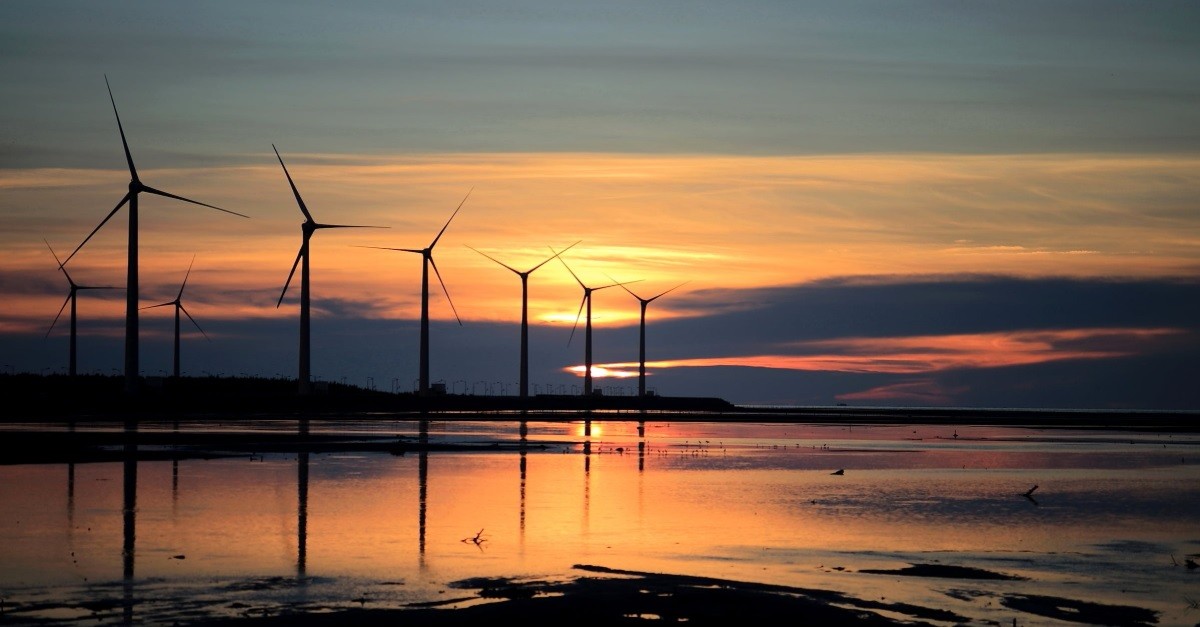The uncertain destiny of support schemes to renewable energy – between international arbitration and domestic tribunals
Introduction
The recent verdict rendered in the ESPF Beteiligungs GmbH[1] case by the arbitrators of the International Centre for Settlement of Investment Disputes (“ICSID”) under the Energy Charter Treaty, which condemned Italy to a compensation of 18 mln € for scaling back incentives to renewable energy plants, is only the most recent, yet certainly not the last chapter of the troubled history of incentives to alternative sources of energy in Italy. Incentives or support schemes are a policy implemented by several countries in order to foster the production of renewable energy, which has been – at least until recent times – much more expensive compared to traditional sources of energy (coal, natural gas, oil). But first things first: what is the origin of these incentives?
The supranational origin of Italian support schemes
The policy of support schemes for renewable sources of energy has represented a strategy put in place by many countries of the world in order to pursue the decarbonization of the energy sector and the goals set in the treaties agreed under the United Nations Framework Convention on Climate Change (“UNFCCC”), from the Kyoto Protocol in the 1990s to the more recent Paris Agreement.
The European Union has been extremely proactive in this field and has set well-known “packages” of Directives concerning decarbonization, energy efficiency and the promotion of renewable energy sources. In particular, Directive 2001/77 EC, Directive 2009/28 EC and Directive (EU) 2018/2001 (also known as the “Renewable Energy Sources/RES Directives”) are the three regulatory systems which characterized the European renewable energy policy in succession.
Directive 2009/28 EC was, in particular, extremely relevant in setting binding targets for 2020: European countries were – indirectly – required to set up support schemes in order to reach the target of 20% of energy produced by renewable sources before 2020. Binding targets represented a noteworthy innovation, as the vague obligations decided under the UNFCCC were finally made more detailed and specific.
In order to comply with the international and the much more defined European rules in this field, Italy has adapted its legislation by introducing quite generous support schemes, especially through the Conti Energia[2] provided by the GSE[3], the authority in charge of the issuance of incentives for renewables. Several Italian and international investors looked at this situation as a big opportunity and the investments in this sector increased rapidly.
The Spalma incentivi decree
If, on one hand, the goals set in the international treaties on climate change were doubtlessly easier to reach thanks to the copious, overmentioned investments, on the other hand the economic burden for the State became more and more unsustainable over time. Moreover, swift technological developments led, inter alia, to falling costs for renewable energy production[4]: this made the incentives excessive compared to the costs actually faced by private investors. This purely economic reason led the Italian government to issue the so called “Spalma Incentivi”[5], a decree adopted in 2014 that reduced the incentives for photovoltaic (“PV”) installations, which had been already set and defined by conventions between the investors and the GSE[6]. In particular, the legislator revised the support scheme and allowed investors to choose among three different options: two of them consisted in a remodulation of the amount provided in the same period of time, whereas the third consisted in spreading the same amount in a longer period of time compared to what had been agreed (24 years instead of 20). This retroactive remodulation of the incentives led several international investors to consider that their legitimate expectations under the Energy Charter Treaty (“ECT”) had been violated by this single, yet extremely relevant, act of the Italian government. Thus, they sued Italy for breaching the ECT.
Arbitration under the ECT
What is the ECT? This – not very well known – international agreement is a convention signed by 53 parties (51 sovereign States plus the EU and EURATOM) originally designed in order to develop security and cooperation among States in the energy sector. Though its scope is wide, comprising different points such as, inter alia, the cooperation on energy efficiency, energy security and the principle of sovereignty over energy resources, its core provisions concern the protection of investments[7] coming from a State which is party to the convention and that are addressed to energy projects in another State party of the convention (art. 10.1):
“Each Contracting Party shall, in accordance with the provisions of this Treaty, encourage and create stable, equitable, favorable and transparent conditions for Investors […] Such conditions shall include a commitment to accord at all times to Investments of Investors of other Contracting Parties fair and equitable treatment. Such Investments shall also enjoy the most constant protection and security […]”.
Thus, the ECT can be counted among the several international treaties on investments, with the relevant peculiarity that this is not a bilateral investment treaty as it was signed by a large number of parties. Article 10.1 provides the landmark of the protection of investments in this field, that is the obligations upon host countries to maintain a “fair and equitable treatment” of foreign investments.
The ECT also set up a dispute resolution system which allows foreign investors to sue directly a State for breaching the treaty through an international arbitration system, illustrated in article 26[8]. This article gives a consistent advantage to foreign investors, as it allows foreign investors to have a direct access to international arbitrators who will decide about a potential breach of the treaty by a host State.
After the Spalma Incentivi decree, Italy was sued by several foreign investors[9]. According to the official website of the ECT, Italy has been protagonist of thirteen cases as a respondent State, becoming the second most-sued country after Spain. Italy’s experience in the disputes under the ECT was characterized by mixed fortunes.
In Belenergia[10], the arbitrators ruled that the revision of incentives made by the Spalma Incentivi decree did not represent either a violation of a legitimate expectation of the firms who had invested in a PV power station in Italy or an indirect expropriation[11]. Thus, neither Article 10 nor Article 13 of the ECT had been breached. The same conclusion was reached in Blusun[12]. The opposite conclusion, which entailed a breach of Article 10, was reached in the case Greentech Energy Systems and Novenergia[13] (again, foreign investors in PV power plants), and CEF Energia BV[14], still regarding the Spalma incentivi decree[15].
The most recent arbitration rendered against Italy by the ICSID in 2020, the abovementioned ESPF Beteiligungs GmbH, condemned Italy to a compensation of more than 18 mln €.
The “fair and equitable treatment” as a limit to national discretion in the policy of support schemes
It appears that the very core of the sentences of the arbitrators based on the ECT is the notion of “fair and equitable treatment” contained in article 10 of the Treaty. It goes without saying that the open and broad meaning of this provision must be interpreted on a case by case basis by the arbitrators and it is too soon to assess whether, in the future cases to be resolved, they will tip the balance towards the State’s discretion or towards foreign investors’ expectations. Fair and equitable treatment is a broad concept which encompasses predictability, reasonableness and proportionality of policy change. What seems already incontrovertible is that the energy transition in Italy has been influenced by the ECT and by arbitrators. The discretion of the State in shaping both its energy policy and, more in detail, the decisions over the incentives for renewables must be aligned with the ECT.
Arguably the recapture of the lost discretion is the reason why Italy has withdrawn from the ECT in 2015. However, the withdrawal does not have an immediate effect, as it entails that the investments initiated before 2015 will still have the protection under the ECT for 20 years, whereas the investments undertaken after 2015 will not.
The position of the Italian Constitutional Court and the Court of Justice of the European Union
The arbitrations which awarded a compensation to foreign investors do not appear in line with the position of the Constitutional Court of Italy. In a recent judgment the Court was called to assess the compatibility of the Spalma Incentivi with Article 3 and 41 of the Constitution[16]. The main point of the ruling was that a breach of the investors’ legitimate expectations was not found, as the normative shift did not come in an either unpredictable or sudden way. The Court also took into consideration the swift technological developments in the sector and the decreasing costs in the field. Hence, the legislator did not intervene in an arbitrary way, as the intention was to restore balance in the set of interests at stake: protecting investments and spreading the costs more proportionally.
The assessment of the compatibility of the Spalma incentivi decree with Directive 2009/28 EC has not been undertaken as yet by the Court of Justice of the European Union (“CJEU”), since the proceedings for the preliminary ruling recently asked by the Italian judges is still pending[17].
However, the CJEU has always been flexible with regards to the policy of incentives leaving to Member States a certain margin of discretion, as the pursuit of decarbonization was deemed to be worth of a derogation to the pillars of the Single market[18].
This approach has also been confirmed in the assessment of the reduction of the Italian incentives through the different Conti Energia. In a recent judgment[19], the CJEU was required by the Italian Consiglio di Stato to ascertain whether the European provisions of the second RES Directive, in particular its Article 3.3 over support schemes, precluded the national legislator to reduce or remove incentive rates for energy produced by PV power stations which were introduced previously. In particular, the Quinto Conto Energia (Fifth Energy Tariff) had decreased the amount of PV incentives due to the falling costs of the plants and the related growth of public spending for the State. The core difference with the Spalma Incentivi was that the remodulation was, in a sense, more predictable. In this case, the plants which were not rewarded with support schemes had come into function in February 2012. Yet, the plants which came into operation after August 2011 could not access directly the support schemes, but they would be included in registers which would not be opened when the costs ceiling established for incentives was reached. Therefore, the remodulation cannot be deemed as “retroactive”, unlike the remodulation entailed by the Spalma Incentivi. The European judges decided as following, stating that such reduction brought by the reaching of the cost ceiling was legitimate:
“(…) Article 3(3)(a) of Directive 2009/28, read in the light of the principles of legal certainty and the protection of legitimate expectations, must be interpreted as not precluding national legislation, such as that at issue in the main proceedings, which allows a Member State to provide for the reduction, or even the removal, of incentive rates for energy produced by solar photovoltaic plants which were introduced previously[20]”.
Hence, the reduction or even the removal of incentives did not violate the legitimate expectations of the investors. The Court appeared to be more tolerant than international arbitrators with regards to policy change in this sector, and left to Italy a certain margin of discretion. For this reason, a decision which does not find the Spalma Incentivi and its retroactive effect to be incompatible with the RES Directive would not be surprising.
Conclusion
Several arbitrations which involve Italy still have to be decided by international arbitrators. Predicting the outcome of these trials is not an easy task. The interpretation of the ECT provisions and in particular of the fair and equitable treatment clause under article 10 is equally not straightforward.
The paradox of this situation consists in the much different destiny of foreign and national investments. While the former are protected under the ECT and thus have good chances to be rewarded by international arbitrators, the latter are protected only under the Italian (and European) jurisdiction. As illustrated above, the outcome of the Constitutional Court’s line of reasoning was not aligned with the outcome of the arbitrators. The same can be said about the CJEU.
Moreover, further arbitrations are much likely to be initiated by foreign investors in the next few years, relating to those investments made before 2015[21]: the path towards the end of these disputes, which link very different topics such as climate change and international investment law, is still long and unpredictable.
[1] ESPF Beteiligungs GmbH, ESPF Nr. 2 Austria Beteiligungs GmbH and InfraClass Energie 5 GmbH & Co. KG v. Italy, ICSID Case No. ARB/16/5
[2] The Conti Energia are decrees issued by the Italian Ministry of Economic Development, designed in order to award the producers of renewable energy – in particular, photovoltaic power plants .The first Conto Energia was issued by the Ministry of Economic Development in 2005 (M. D. of 28 July 2005). The fifth and last Conto Energia was issued in 2012 (M. D. of 5 July 2012).
[3] Gestore dei Servizi Energetici S.p.A. The main aim of this authority, controlled by the Ministry of Economic and Finance, is to promote both energy efficiency and renewable energy sources in Italy through the issuance of incentives, both to private investors in the field of renewables and to energy saving companies (“ESCOs”) in the field of energy efficiency.
[4] The process towards the so called “grid parity”
[5] D.l. 91/2014.
[6] In particular, the reduction was referred to PV installations with a power above 200Kw.
[7] A clear description of the influence of the Energy Charter Treaty in this field is provided by DANIEL BEHN and OLE KRISTIAN FAUCHALD «Governments under crosss-fire? Renewable energy and international economic tribunals» in “Manchester Journal of International Economic Law” Vol. 2 (2015).
[8] “Settlement of Disputes between an Investor and a Contracting Party”.
[9] Many other States have been part of disputes concerning the support schemes under the ECT. For an analysis about the case of Spain, the most sued country, see TOMÀS RESTREPO «Modification of Renewable Energy support schemes under the Energy Charter Treaty; Eiser and Charanne in the context of climate change» in “Goettingen Journal of International Law” 8 (2017).
[10] Belenergia S.A. v. Italy, ICSID Case No. ARB/15/40.
[11] art. 13 (“Expropriation”) is another noteworthy article of the ECT as it prevents direct or indirect expropriations by the host State.
[12] Blusun S.A., Jean-Pierre Lecorcier and Michael Stein v. Italy, ICSID Case No. ARB/14/3.
[13] Greentech Energy Systems A/S, NovEnergia II Energy & Environment (S.C.A.) SICAR, and NovEnergia II Italian Portfolio S.A. v. Italy, SCC Case No. 095/2015.
[14] CEF Energia B.V. v. Italy, SCC Case No. 158/2015.
[15] These last cases were decided under the Stockholm Chamber of Commerce (SCC) and not under the ICSID.
[16] Judgment 16/2017.
[17] Joined cases C-798/18 and C-798/19.
[18] Since PreussenElektra (Judgement of the CJEU, delivered on 13 March 2001-PreussenElektra, C-379/98, EU:C:2001:160), to Alands Vindkraft (Judgement of the CJEU, delivered on 1 July 2014- Ålands Vindkraft C-573/12, EU:C:2014:2037), the Court has found that a policy of incentives, which favored national over foreign producers of renewable energy, did not lead to a violation of article 34 TFUE.
[19] joined cases C 180/18; C286/18; C287/18e.
[20] Joined cases C 180/18; C286/18; C287/18e, Judgment of the CJEU (11 July 2019), paragraph 47.
[21] A new ICSID arbitration has been registered againts Italy in October 2020: Encavis and others v. Italy, ICSID Case No. ARB/20/39.




